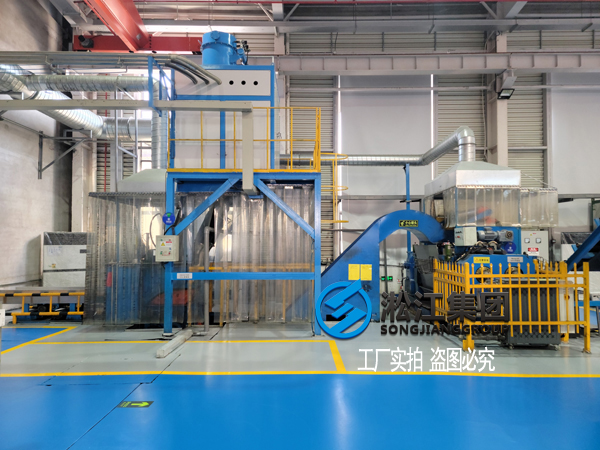The official website of Shanghai Songjiang Vibration Absorber Co., Ltd.presents: 【Mixing】55-liter rubber internal mixer with automatic feeding system “Dust-free and environmentally friendly”. Songjiang Group invested 120 million yuan to build a project with an annual output of 1.2 million shock absorbers in Nantong. The project introduced multiple automated production equipment. Below is an introduction to the rubber internal mixer in the mixing workshop. This internal mixer is equipped with an automatic feeding system, replacing manual feeding, reducing labor, and avoiding the disadvantages of unsanitary, unsafe, and inaccurate manual feeding.

Rubber Mixer, also known as an Internal Mixer, is a type of closed-loop rubber refining equipment primarily used for plasticizing and mixing rubber compounds. The mixer consists of a pair of rotors with specific shapes that rotate in opposite directions within a sealed chamber, subjecting polymer materials to intermittent plasticizing and mixing under adjustable temperature and pressure conditions. It comprises components such as the mixing chamber, rotors, rotor sealing device, feeding and pressing device, discharging device, transmission device, and base.
During operation, the two rotors rotate in opposite directions, gripping and feeding the material from the feeding port into the roller gap, where it undergoes compression and shear from the rotor. After passing through the roller gap, the material encounters the tip edges of the bottom plunger, splitting into two parts, which then flow back to the roller gap along the gaps between the front and rear chamber walls and the rotor. Throughout this process, the material experiences shear and friction, causing a rapid rise in temperature, decrease in viscosity, and improved wetting of rubber surfaces by compounding agents, facilitating thorough mixing. Clusters of compounding agents are broken down by shear as they pass through gaps between the rotors, top and bottom plungers, and chamber walls, surrounded by stretched and deformed rubber, thus achieving stable dispersion. Additionally, the protrusions on the rotors induce axial movement of the rubber material, promoting mixing. Due to the intense shear forces experienced during mixing, along with elevated temperatures, rubber mixing efficiency on an internal mixer significantly exceeds that of an open mill.
Related link:【Feeding】Rubber bulk material automatic feeding system “Never make mistakes again”










